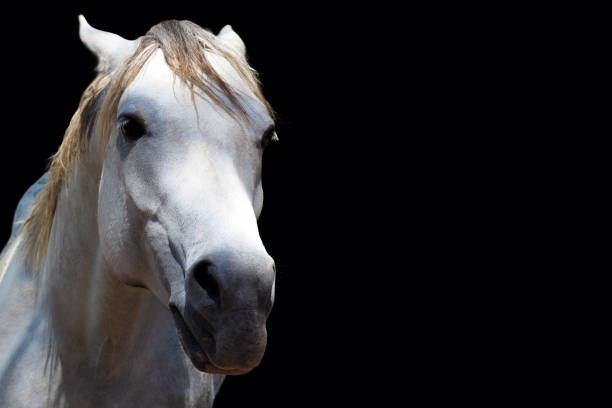Are you seeing your horse wagging its head when you ride? Head tossing can be anything from irritating bobbing to dangerous head throwing or shaking. Poor control may be a sign that your horse is tossing its head. If your horse is throwing its head in several performance classes, such as pleasure and equitation, the judge will pass you over.
Why horses toss their heads
Horses can bob or toss their heads for many reasons. Before resorting to harsher bits, martingales or tie-downs, it is important to identify the root cause. It is unfair to your horse if it is tied in its head so that it cannot escape pain or discomfort. Let’s take a look at the reasons.
- Dental – Often, a horse’s teeth are worn unevenly. This can cause uncomfortable hooks and edges in the horse’s teeth that can cause him to scrape his tongue or cheeks while he chews. This can make holding horses a little uncomfortable. Most horses should have their teeth cleaned and rasped (called floating), at least once per year. However, some horses might need to have their teeth checked every six months. When trying to fix head shaking and tossing problems, dental issues should be your first concern. Problems with the bit can also be caused by extra teeth that grow in front the chewing teeth (wolf teeth). This can be addressed by your vet.
- Bits – Make sure the bit fits in the horse’s mouth. Is the bit too small and pinching, too thick or too full? Is it too loose that the curb strap allows the curb bit to move too far into the horse’s mouth? Are the curb straps too tight against the horse’s lips or gums, or too low that it is clacking on its front teeth? Does the horse want to avoid the bit? Are the edges too sharp or do they have rusty rust? Some horses may not like the taste or shape of certain metals. You can try different bits to find one that your horse will accept without having to toss his head.
- Insects – Horses can wiggle their heads when they are worried about the insects in their ears. This can cause serious problems when horses are trying to get rid of bugs. Use ear covers or insect repellent. Horses can get very agitated about biting insects so it is a good idea to ride indoors or when they are less common. Some horses may experience a head shaking problem that doesn’t go away until the weather cools down.
- Saddle fit. A saddle that is too tight can pinch your horse’s back and cause unwanted behavior, such as head tossing. Bad saddle fit is a common cause of “bad” behavior. Regularly check the fit of your saddle on your horse to ensure that it is in good condition.
- Inadequate rein aids Horses often jerk in dismay at the mishandling of the reins. A rider must learn how to use light, compassionate hands to follow the movements of the horse while maintaining sufficient contact to control it. This is the most common cause of head tossing. A lesson with an instructor can help you learn how to build a dynamic, soft connection with your horse’s mouth. Horses can throw their heads when they feel that their hands are too heavy or when they have to be pushed hard. Horses may need to be re-trained to trust their rider and not hurt their mouths.
Solutions vs. Solutions vs.
You might be tempted to solve the problem with a harsher tie-down, bit, or martingale. But this may not solve the problem. Any unwanted behavior should be viewed as your horse’s reaction to something you or someone else has done. If a horse wags its tail, it’s trying to tell you something. This is the way it communicates with you. It is always better to be a horse whisperer than a horse listener.

